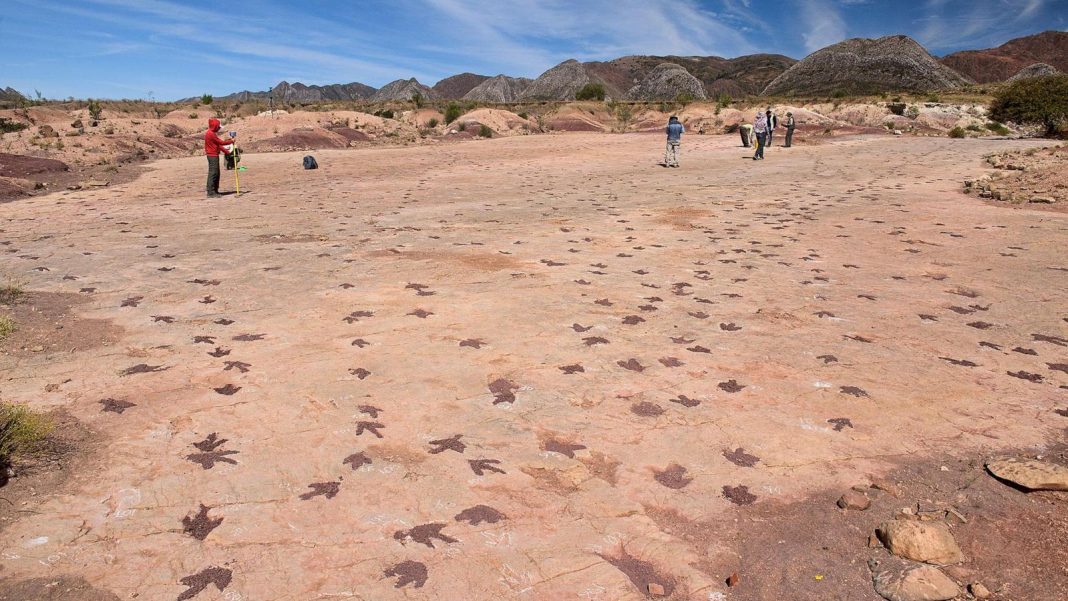Torotoro National Park in Bolivia is quickly gaining fame due to its natural beauty and prehistoric history.
Nestled into the Eastern Cordillera of the Andes, the impressive Torotoro Canyon sits at 250 meters deep and plays host to nesting condors, monk parakeets and red-fronted macaws. Hiking the canyon with its vivid wildlife, emerald green pools, and amber-colored cliffs is a major draw for international tourists. In addition, the national park offers guided tours of the many deep caves and underwater rivers that surround the canyon as well as the famous El Vergel waterfall. Hikers and visitors can also swim in the turquoise pools that flow from the many rivers and waterfalls at the base of the canyon. However, the area’s natural beauty is not what is causing that park’s popularity boom.
During the Cretaceous Period, this entire area was encompassed by the waters of the Andean Cretaceous Sea. As the South American and African continents drifted apart, the sea levels fell and this entire area became a wetland with plentiful resources for grazing herds of dinosaurs. As they traveled along the corridor, dinosaurs left their footprints embedded in the soft dirt and mud. During subsequent periods of drought, these footprints and claw marks solidified.
Today, Torotoro National Park holds more than 3,500 preserved dinosaur footprints from both quadrupedal and bipedal species of dinosaur. Because the average person may not be able to tell where these footprints end and regular areas of dried dirt begin, local guides and scientists will frequently fill in the footprints with loose, dark-colored dirt in order to make them stand out. Local guides offer their services to intrepid explorers who want to learn more about this historic space. Local guides will often teach hikers to identify dinosaur footprints as well as differentiate between carnivorous and herbivorous species. Each year, paleontologists and explorers are making more discoveries. Soon, this park may well be known as a modern Jurassic Park.

The local town, also named Torotoro, consists of narrow buildings with quiet cobblestone streets. It would be just like every other Bolivian town – except for the fact that it’s covered in dinosaurs. Shops and restaurants feature dinosaur heads or claws peeking out from the peak of the roof. Small pubs and bars are popping up with names like “El Dinosaurio”. Parks and public places are filled with dinosaur memorabilia and statues stand as an ode to the town’s prehistoric ties. Walking the streets, you get the sense that you have truly been transported back in time.







